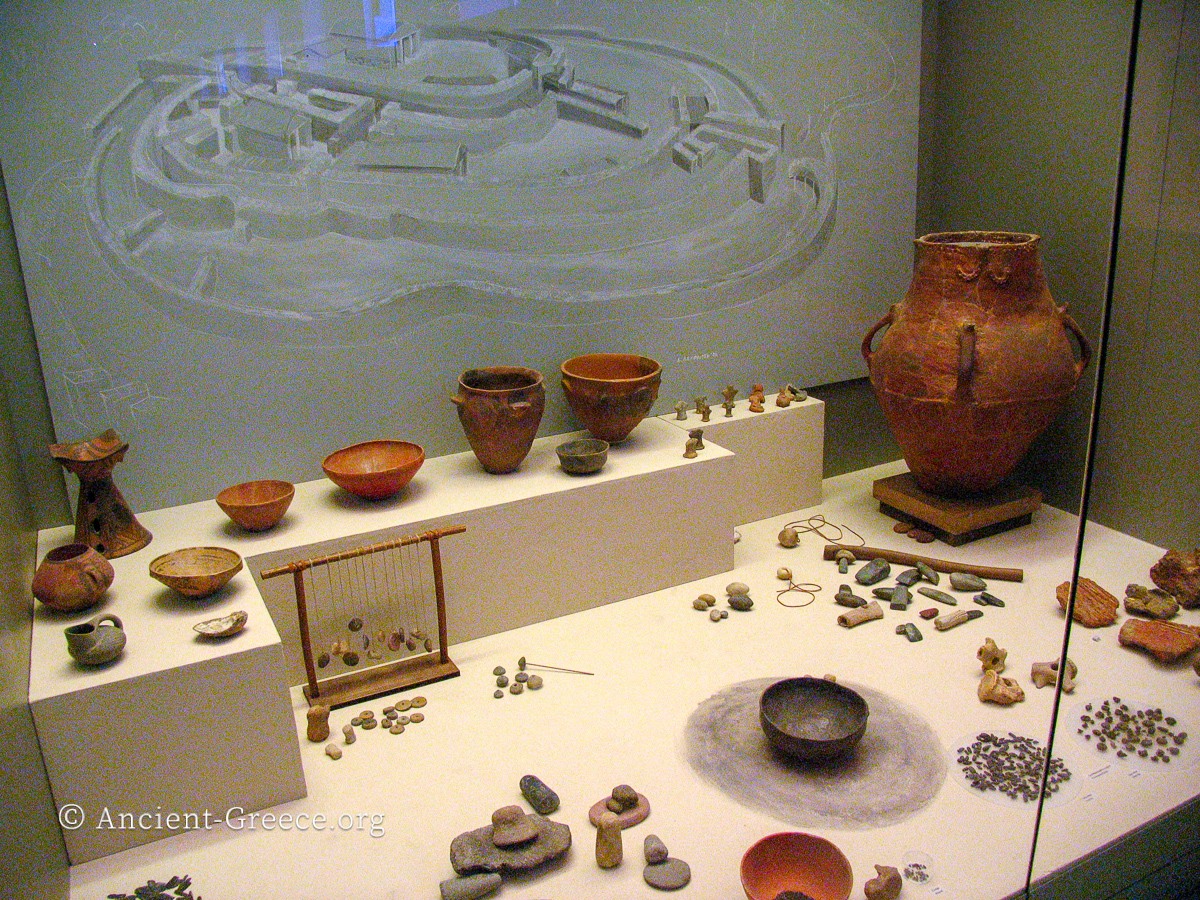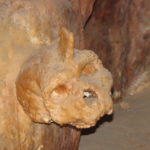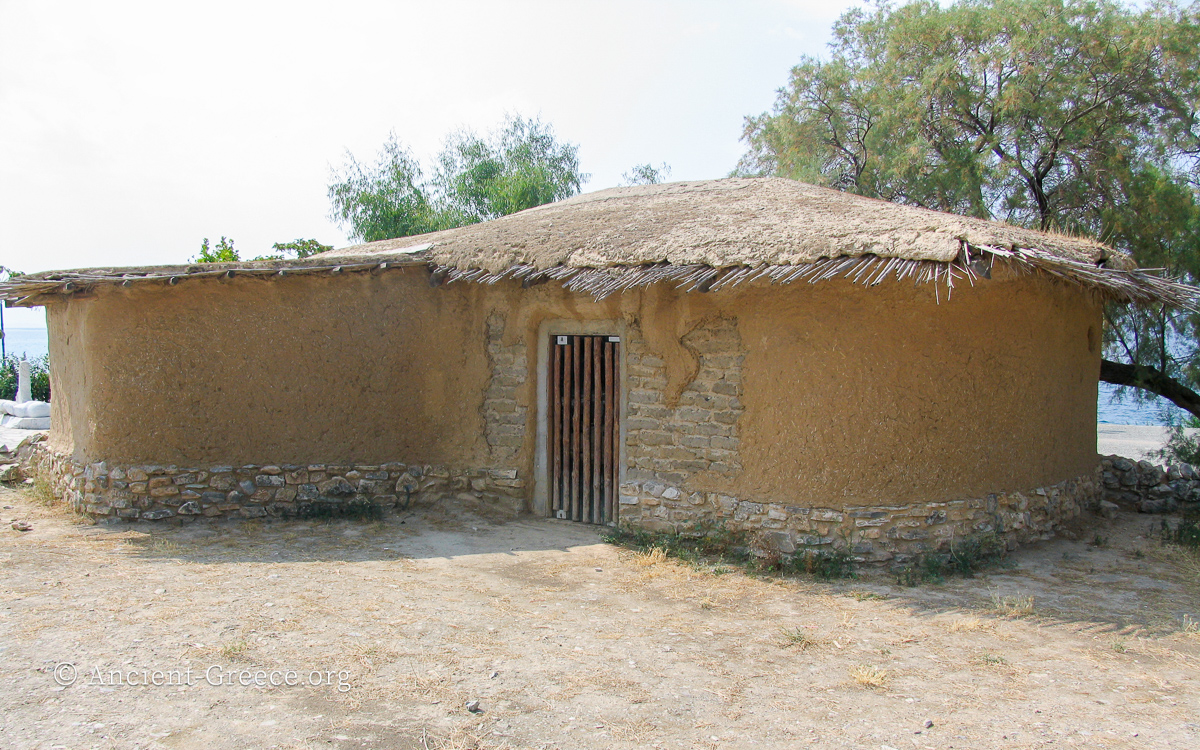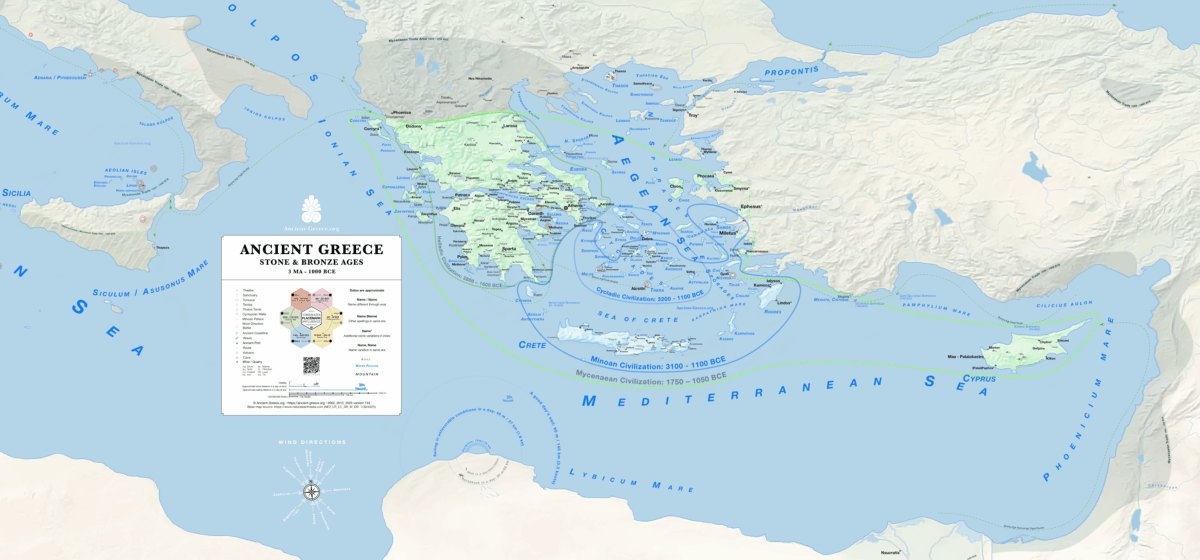
On this page:
Earliest Humans
The earliest evidence of habitation in Greece comes in the form of a skull found in the Petralona Cave in Halikidiki. The cranium has been difficult to date, with some estimates indicating that it is about between 300,000 and 400,000 years old.
While questions abound regarding the exact age and the species of the cranium, it has been classified as a hybrid between “Homo Erectus, the first hominid to migrate out Africa, and Homo Neanderthalensis, the early human that dominated Europe and the Near East before the advent of our own species.” (Runnels & Murray, 15).

Preliminary dating of stone tools found in Megalopolis indicates they were used during the Lower Paleolithic period.
The earliest evidence of burials and commerce in the Aegean (dated to 7250 BCE) were unearthed in Franchthi cave in the Argolid.
A wealth of stone tools found in sites in Epirus, Thessaly, Macedonia, and the Peloponnesse reveal the existence of flourishing Paleolithic and Mesolithic communities in the Greek mainland. But the Neolithic settlements found are much more numerous.
Neolithic Greece
The Neolithic Era starts in the beginning of the 7th millennium and is characterized by development of farming, stock-breeding, extensive use of stone in construction, and craft specialization. It is divided in five phases:
- Pre-Ceramic or Aceramic (6800 – 6500 BCE)
- Early Neolithic (6500 – 5800 BCE)
- Middle Neolithic (5800 – 5300 BCE)
- Late Neolithic I (5300 – 4800 BCE)
- Late Neolithic II (4800 – 4500 BCE)
- Final Neolithic or Chalcolithic (4500 – 3200 BCE).

Neolithic settlements were spread throughout Greece, with a higher concentration around the Thessalian plain.
The Neolithic settlements of Sesklo (c. 7000 – 3200 BCE) and Dimini (c. 4800 – 4500 BCE) in Thessaly exhibit early evidence of sophisticated social organization, advanced economies, and unique styles of pottery.
Their settlements included fortifications, streets, squares, and early versions of “megaron” and Tsangli type houses–making them the earliest architectural and town-planning forms in Europe.
Excavations of Neolithic settlements have unearthed a plethora of personal articles (weaving and hand tools, vases, and domesticated animals), as well as communal properties (sheep-folds, corp barns, public areas, and fortifications).
The presence of obsidian objects in the mainland provide clear evidence of wide-spread seafaring in the Aegean Sea since the very beginning of the Neolithic Era.
The Final Neolithic (or Chalcolithic) phase marks the gradual transition to the metal-based economy of the Early Bronze Age.
Chapters
This history of Ancient Greece is divided into the following chapters:
- Timeline
- Introduction
- Overview
- Geography
- Stone Age
- Bronze Age
- Dark Ages
- Archaic Era
- Classical Era
- Hellenistic Era

Related Pages


































